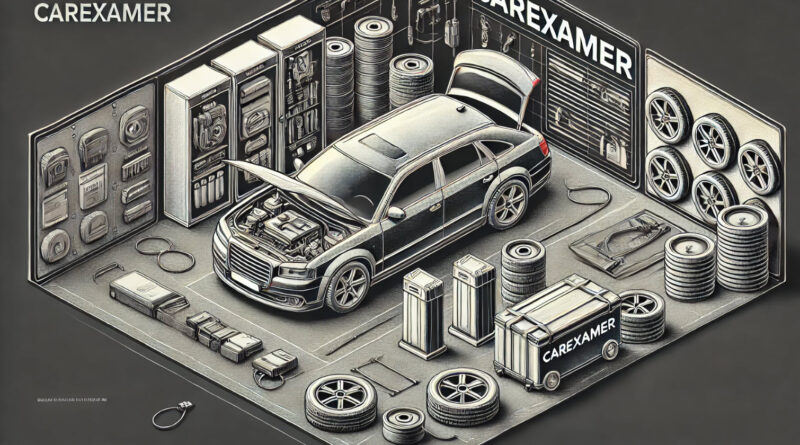Guide How Long Can You Leave a Car Without Driving?
In this article, we’ll explore how long you can leave your car without driving it and provide tips to keep your vehicle in good shape while it’s not in use. Whether you’re going on an extended vacation, working remotely, or simply not using your car as frequently, you may wonder how long it’s safe to leave your car without driving it. Cars are built to be used regularly, and leaving one idle for an extended period can lead to mechanical issues.
How Long Can You Leave Your Car Unused?
You can typically leave your car parked and unused for up to two weeks without worrying about significant damage, assuming the vehicle is in good condition. However, after two weeks, several components may start to degrade, and problems could arise. Here’s what happens when a car sits idle for extended periods mainly outside exposed:
- Battery Drain: Modern vehicles have electronics that drain the battery even when the car is not in use. After two weeks of inactivity, your battery could lose charge, especially if it’s older.
- Tire Damage: When a car sits too long, the weight of the vehicle can cause the tires to develop flat spots. The tires can also lose air pressure over time.
- Fluids Settling: Engine oil, coolant, and other fluids may settle and lose their effectiveness if the car is not driven for a while. This could lead to engine damage if the car is started after sitting unused for too long.
- Brake Issues: Rust can form on the brake discs when a car is left unused, potentially affecting braking performance when you drive it again.
- Fuel Degradation: Gasoline can start to degrade after about a month of being unused, which can lead to poor engine performance and difficulty starting.
Can You Leave a Car for Longer Than Two Weeks?
If you’re planning to leave your car for longer than two weeks, it’s essential to take certain precautions. While it’s possible to leave a car parked for a month or longer, doing so without preparation can lead to expensive repairs or issues when you start using the vehicle again. Here’s what you can do to extend the idle time safely:
Tips for Leaving Your Car Unused for Extended Periods
- Keep the Battery Charged:
- Use a trickle charger or battery maintainer to keep your battery charged if you won’t be driving for a while. Alternatively, disconnect the battery to prevent drain, but be aware that this may reset some of your vehicle’s electronics.
2. Inflate Your Tires:
- Inflate your tires to the recommended pressure or slightly higher to prevent flat spots. If the car will be unused for a month or longer, consider using tire jacks to take the weight off the tires.
3. Fill Up the Tank:
- Keep your fuel tank full to prevent moisture buildup inside the tank. You can also add a fuel stabilizer to keep the fuel from degrading.
4. Park in a Covered Area:
- If possible, park your car in a garage or use a car cover to protect it from the elements. Exposure to sunlight, rain, or snow can damage the paint and exterior components.
5. Check Fluids:
- Before leaving the car idle, check your engine oil, coolant, and other fluids to ensure they are at the correct levels. This helps maintain the health of your vehicle while it’s not in use.
6. Use the Parking Brake Sparingly:
- If your car is parked for an extended period, avoid using the parking brake, as this can cause the brake pads to stick to the discs. Instead, use wheel chocks to prevent the car from rolling.
7. Start the Car Occasionally:
- If possible, start your car every week or two and let it run for 15 minutes. This will help maintain the battery, circulate fluids, and prevent engine components from seizing.
8. Cover the Exhaust:
- To prevent small animals from nesting in your exhaust pipe, cover it with a cloth or plastic bag, but make sure to remove it before starting the car again.
What Happens If You Leave Your Car Unused for Too Long?
Leaving your car unused for an extended period without taking precautions can lead to several issues:
- Dead Battery: The most common issue is a dead battery, which will prevent the car from starting.
- Tire Flat Spots: Prolonged parking can cause tires to develop flat spots, reducing the lifespan of the tires and affecting ride quality.
- Brake Seizing: The brake pads may seize to the discs, which could cause damage when the car is driven again. Do not use parking brake to avoid seizure
- Fuel Issues: Old fuel can clog the fuel lines or injectors, making it difficult to start the car.
- Engine Problems: Settled engine oil and other fluids can lead to poor lubrication when you start the car, causing potential engine wear.
Summary:
While it’s okay to leave your car unused for up to two weeks, anything longer requires some preparation. By following these maintenance tips, you can safely leave your car idle for a month or more without worrying about significant damage. Regular checks, proper storage, and keeping the battery charged will help ensure your vehicle is ready to go when you need it again.
If you’re unsure or don’t have time for these maintenance tasks, consider having a professional inspect and service your vehicle before leaving it idle for an extended period.
Buying a used VW. Buying used vauxhall, BMW, Jaguar, Ford, Volvo, Range rover, Bentley, Aston Martin, Porsche, Ferrari, Lamborghini, Maserati, Hyundai, Tesla, Honda, Pagani

